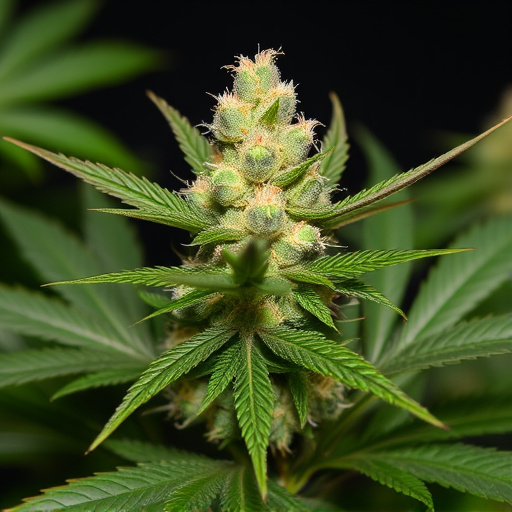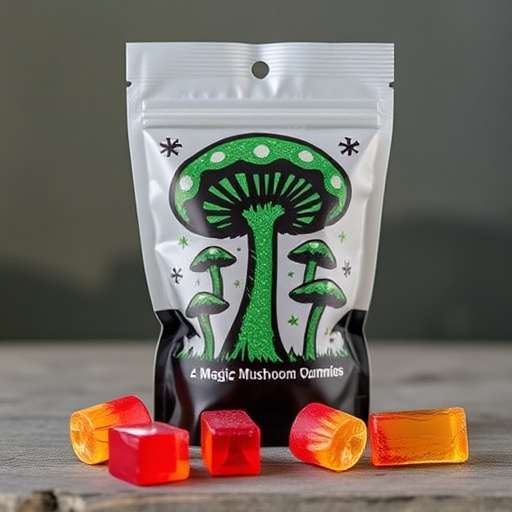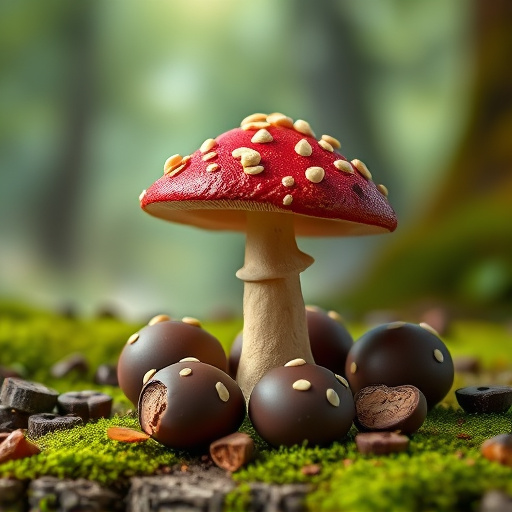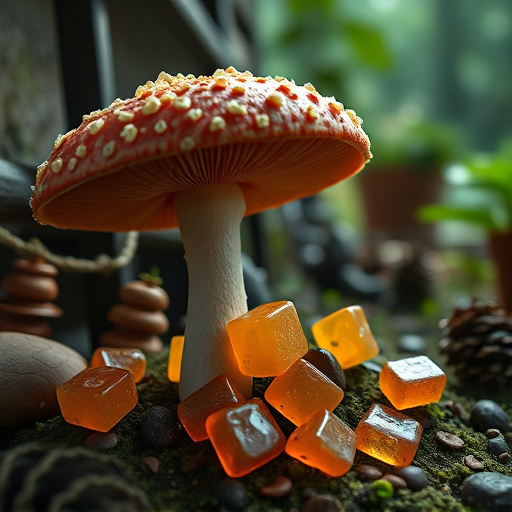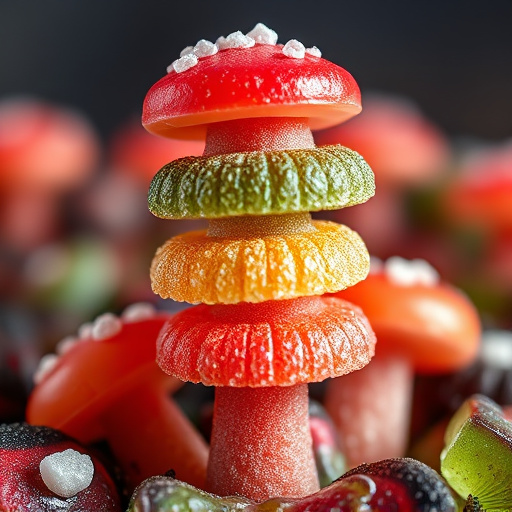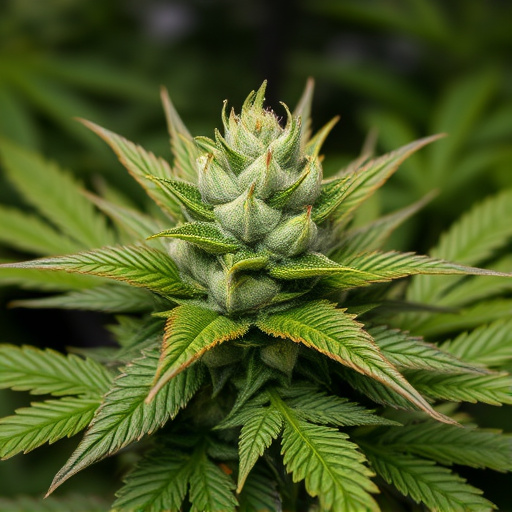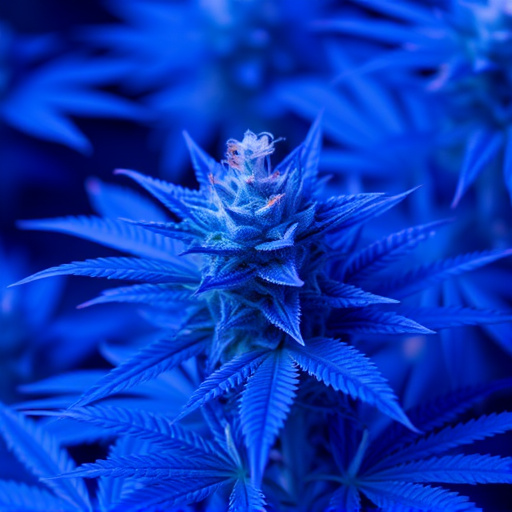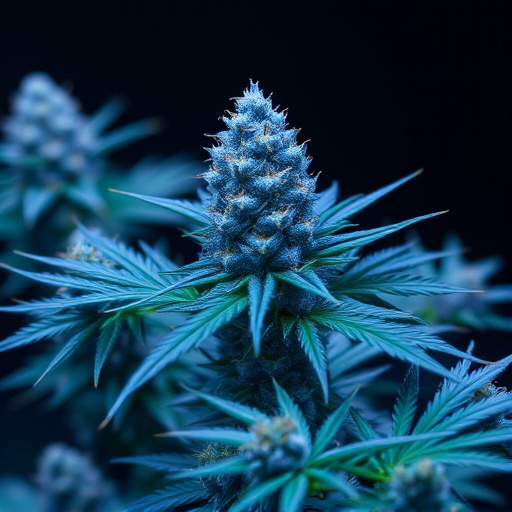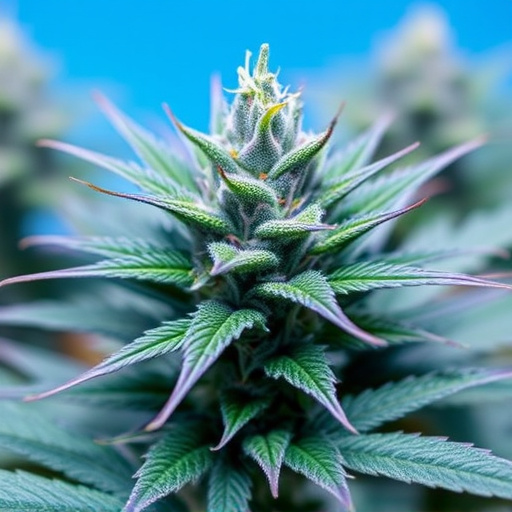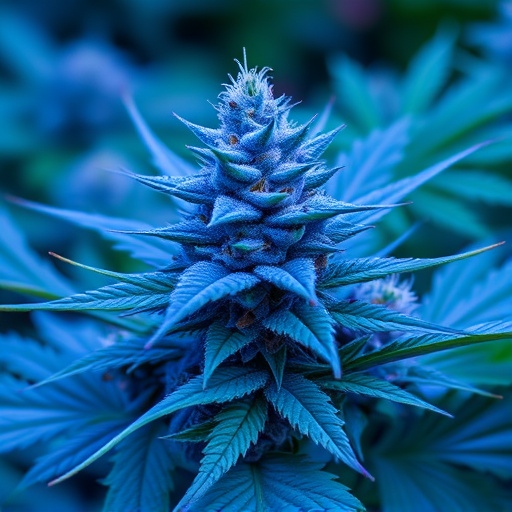Blue cannabis strains' striking colors arise from distinct terpene profiles interacting with cannabinoids, providing varied effects from relaxation to stimulation. Cultivators breed plants with specific genetic traits and environmental cues, like cool temperatures, to create these desired strains, combining aesthetic appeal with unique properties. Understanding these factors is crucial for producing high-quality blue cannabis strains or managing crop pigmentation effectively.
Uncover the captivating reasons behind the vibrant hues of purple, red, and blue in cannabis plants. In this article, we explore the intricate dance between cannabinoid and terpene profiles, unraveling their impact on genetic varieties that lend unique colors to these remarkable plants. Furthermore, discover how environmental factors play a pivotal role in shaping these distinct pigments, including the allure of rare blue cannabis strains.
- Understanding Cannabinoid and Terpene Profiles
- Genetic Varieties and Their Influence on Color
- Environmental Factors Shaping Pigmentation
Understanding Cannabinoid and Terpene Profiles
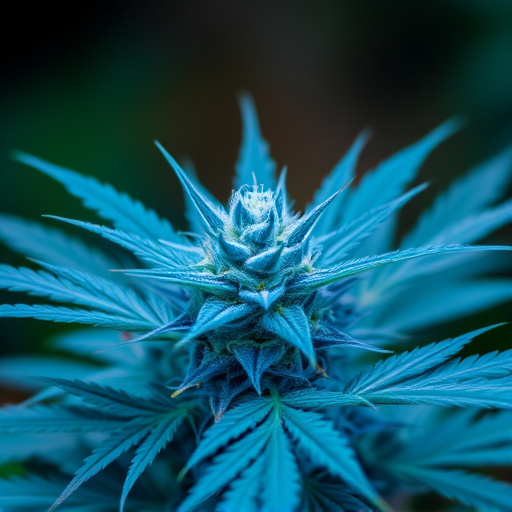
Cannabis plants produce a wide array of chemical compounds, including cannabinoids and terpenes, which contribute to their diverse effects and unique characteristics. Cannabinoids like THC (tetrahydrocannabinol) and CBD (cannabidiol) are well-known for their psychological and physiological impacts on the body. However, there’s a vast ecosystem of other compounds at play. Terpenes, aromatic oils responsible for the plant’s scent and flavor, also interact with cannabinoids, influencing the overall experience.
When it comes to blue cannabis strains, these vibrant colors are often attributed to specific terpene profiles that enhance or modify the effects of cannabinoids. Some terpenes are known to induce feelings of calmness and relaxation, while others may stimulate creativity or provide a more energizing high. Understanding these profiles is crucial for cultivators aiming to create distinctive and desirable cannabis varieties, like blue strains known for their potent effects and unique sensory experiences.
Genetic Varieties and Their Influence on Color
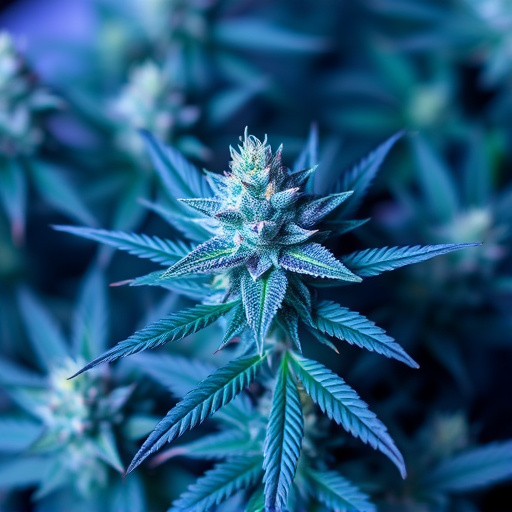
Cannabis plants, like many other flowering species, display a wide range of colors, with purple, red, and blue being among the most striking. This vibrant coloration is not random but carefully regulated by genetics. Different genetic varieties within the cannabis plant kingdom give rise to these unique hues, offering a glimpse into the intricate interplay between nature and nurture.
The genes responsible for pigment production in cannabis play a pivotal role in determining the final color of the flowers. For instance, blue cannabis strains owe their distinctive hue to a group of pigments called anthocyanins, which are produced under specific environmental conditions. These compounds are sensitive to light and temperature, leading to variations in color intensity and shade. As such, breeders often carefully select and cultivate plants with these genetic traits to create the desired blue cannabis strains that not only look captivating but also offer distinct therapeutic or recreational properties.
Environmental Factors Shaping Pigmentation
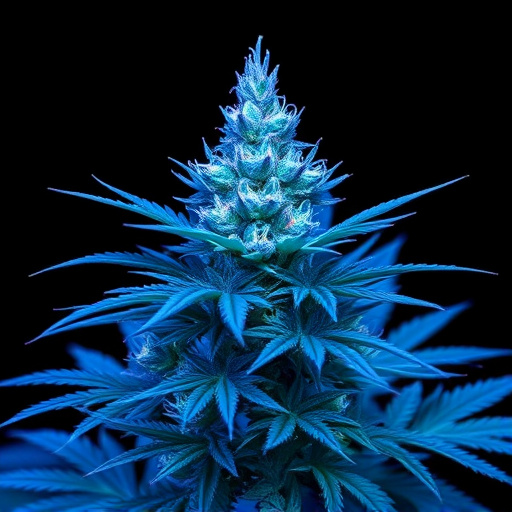
The environment in which cannabis plants grow plays a significant role in determining their pigmentation. Various environmental factors can influence the production of specific pigments, leading to the diverse range of colors seen in cannabis flowers. For instance, blue cannabis strains often result from exposure to cool temperatures during the flowering phase. This triggers the plant to produce higher levels of anthocyanins, natural compounds responsible for blues and purples. Similarly, stress caused by factors like drought or nutrient deficiencies can cause cannabis plants to turn red due to increased production of flavonoids, another class of pigments. Understanding these environmental cues is crucial for cultivators aiming to produce specific blue cannabis strains or manage the color profile of their crops.
The unique colors of purple, red, and blue in cannabis plants are a result of complex interactions between cannabinoid and terpene profiles, genetic diversity, and environmental influences. By understanding these factors, cultivators can breed and nurture specific traits, including desirable blue cannabis strains, that cater to diverse consumer preferences. Whether it’s the soothing effects of blue or vibrant hues with distinct aromas, exploring these causes expands our appreciation for the rich variety within the cannabis plant.
